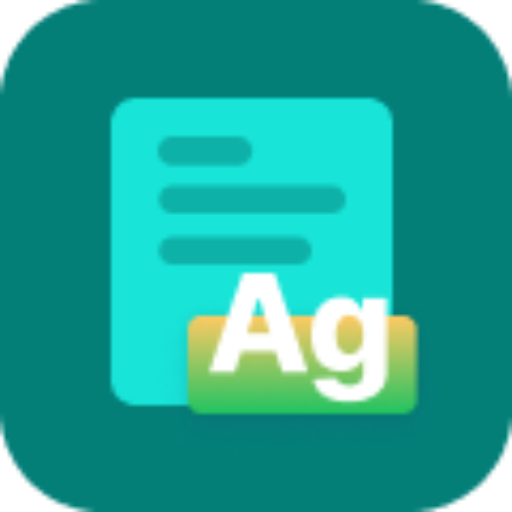Natural Language Prompts-AI text generation tool
AI-powered prompts for clear communication
Related Tools
Load More
Create.prompt
Create best prompt for Create.xyz made by @wasedaAI_taisa
Automated Prompt Refinement
This GPT is designed to refine unpolished or vague instructions into optimized prompts for use with AI interactions. COMMAND TO BEGIN: !start [prompt to refine].

Prompt Writer
This GPT Generate prompts off the Best practice guidelines of Open AI

LetsAI Prompter
Midjourney Prompter from LetsAI magazine

Prompt Generator
Generates comma-separated, succinct image descriptions.

Prompt Engine
A specialized bot for crafting custom domain and template prompts.
20.0 / 5 (200 votes)
Introduction to Natural Language Prompts
Natural Language Prompts are designed to transform complex input, such as keywords, descriptions, or fragmented ideas, into fluent and coherent language. Their primary purpose is to bridge the gap between raw, unstructured information and human-friendly language, providing clarity and precision in communication. The focus is on making user inputs easier to understand by converting them into natural, fluid sentences that read as if written by a human. For example, if you provide a list of terms or a fragmented sentence like 'sunset, beach, waves, peaceful', a Natural Language Prompt would reformat this into a smooth, detailed description like 'A serene beach at sunset with gentle waves lapping against the shore'. This function is especially useful in contexts such as image generation, report writing, or even simplifying user commands.

Key Functions of Natural Language Prompts
Rewriting Complex Input into Fluent Sentences
Example
If a user inputs a command like 'generate mountain image trees river', the Natural Language Prompt reformulates this as 'A majestic mountain scene with a river flowing through a lush forest of tall trees'.
Scenario
This function is commonly applied in AI-based image generation platforms where users need to provide descriptive input, but prefer their ideas converted into natural, readable language to get more accurate results.
Expanding Short Descriptions into Detailed Explanations
Example
A user provides 'car, fast, red, city'. Natural Language Prompts would reformat this as 'A shiny red sports car speeding through a bustling city with tall buildings in the background'.
Scenario
This is useful for people who need to convey more detailed descriptions from brief inputs, especially in creative writing or content creation tasks where users may want more vivid imagery or elaboration.
Simplifying Technical or Abstract Input
Example
Given an input like 'data analysis, AI algorithm, decision trees', the prompt could transform this into 'An AI-driven data analysis process using decision trees to make predictions and guide decisions'.
Scenario
This function is valuable for simplifying technical jargon or abstract terms into more accessible language, benefiting fields like education, technical writing, or user documentation.
Target User Groups for Natural Language Prompts
Content Creators and Writers
These users benefit from the ability to quickly turn short, fragmented ideas into detailed, coherent text. Natural Language Prompts can help with generating ideas, enhancing descriptions, or creating more vivid imagery for storytelling, marketing content, or creative projects.
Non-Technical Users
For people unfamiliar with technical language or formal structure, such as casual users of AI tools, educators, or business professionals, Natural Language Prompts simplify complex or abstract input. They can help these users get the results they want without needing expert knowledge or technical skills, particularly in fields like AI-based content generation, customer service, or education.

How to Use Natural Language Prompts
1
Visit aichatonline.org for a free trial without login, no need for ChatGPT Plus
2
Familiarize yourself with the tool by exploring its core functionalities like generating creative text, rewriting sentences, or summarizing content
3
Input your desired text or concept in plain, natural language to receive detailed, contextually relevant outputs
4
Adjust the prompt length and specificity based on the complexity or detail required for your output
5
Refine your results by rephrasing or expanding the input prompt to get more tailored, accurate responses
Try other advanced and practical GPTs
AI算命Plus
Your Personalized Bazi Analysis Tool

Translate Chinese to Academic English 科研论文中翻英
AI-powered Chinese to English research paper translation.

Ins tagram Hashtag Generator
AI-powered hashtags for social media success

Slogan Generator
AI-Powered Slogans for Every Brand

AI Email Writer
Smart Email Drafting with AI Power

Acronym Generator
AI-powered acronym generation made easy

YourArtist
AI-powered song creation made simple.

Assistants to structured prompts
AI-Powered Prompts for Precise Queries
Productivity Pal
Boost Your Productivity with AI-Powered Guidance
Midjourneyy Prompt Assistant
AI-powered tool for perfect prompts.

Decreto de Desregularización de Milei
AI-powered economic deregulation insights

Diventa un Cyborg delle acquisizioni immobiliari
AI-powered real estate sales training.

- Social Media
- Creative Writing
- Academic Research
- Marketing Copy
- Technical Documentation
Common Questions About Natural Language Prompts
What are Natural Language Prompts used for?
Natural Language Prompts are versatile tools that can assist with rewriting, summarizing, generating ideas, and drafting various types of content, from creative writing to technical documents. By inputting simple, natural language, you can generate specific, contextually accurate text.
What is the benefit of using Natural Language Prompts?
Using Natural Language Prompts simplifies the process of content creation and revision. It allows you to express ideas naturally without worrying about format or structure, while the tool handles the complexity of transforming those ideas into clear, organized outputs.
Do I need special training to use Natural Language Prompts?
No, the tool is designed to be user-friendly, with no specialized knowledge required. You simply input your request in a natural, conversational manner and the tool will generate the desired text. The more specific you are, the more accurate the output will be.
Can Natural Language Prompts be used for academic purposes?
Yes, they are ideal for drafting essays, summaries, reports, and more. The tool helps structure content, improve clarity, and refine the language used in academic work, making it easier for students and professionals to communicate their ideas effectively.
Is there a limit to the types of content Natural Language Prompts can handle?
The tool is highly versatile and can work with a wide variety of content types including emails, articles, creative writing, technical documents, and even code snippets. However, its effectiveness depends on the clarity and detail of the input.